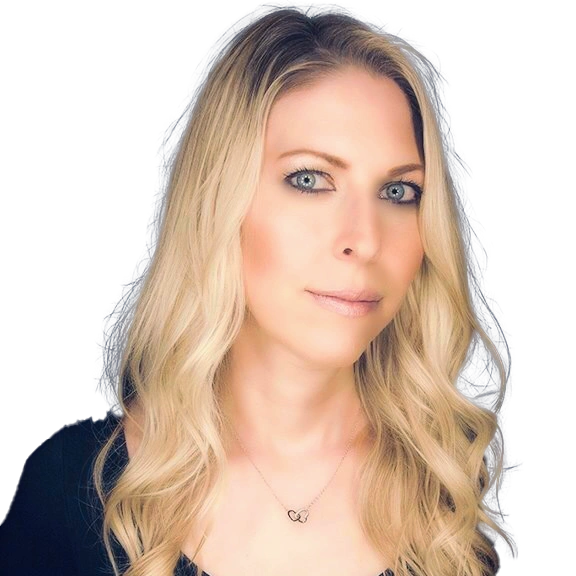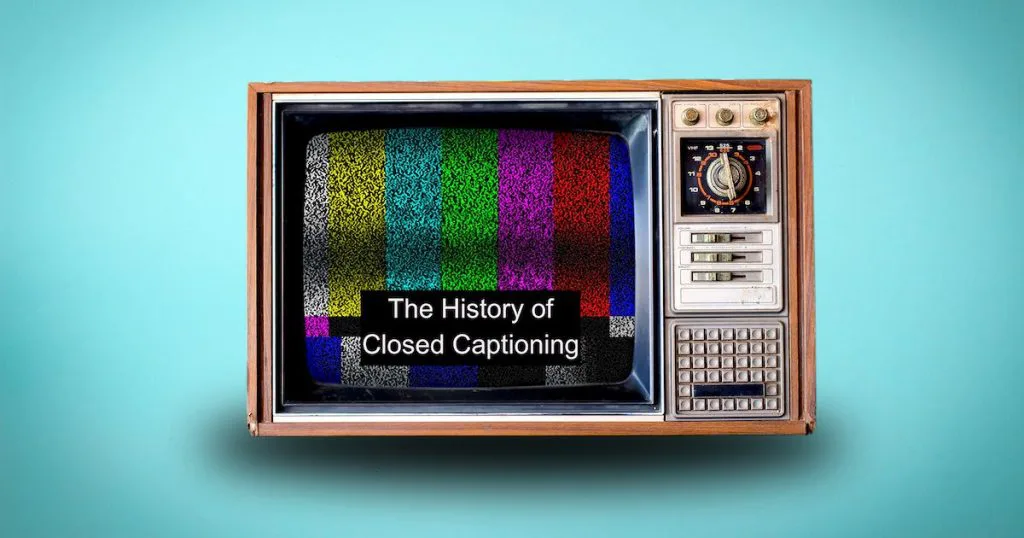The History of Closed Captioning

Have you ever thought about how grateful you are for certain things? There’s another invention that we should be grateful for that may not always come to mind — one which not only makes our lives better, but helps many disadvantaged people. Closed captioning.

Have you ever thought about how grateful you are for certain things? We all have. For instance, everyone can surely agree on universal gratitude for such wonderful inventions as coffee, the computer and the automobile.
There’s yet another invention that we should be grateful for that may not always come to mind — one which not only makes our lives better, but helps many disadvantaged people. Closed captioning. Let’s explore the history of closed captioning and how it continues to help people every day.
The History of Closed Captioning
Technology has advanced so much that with the click of a button on your television’s remote control, you can select the closed captioning option. Just like magic, the words being spoken are now written on the screen.
Deaf or hard of hearing and want to watch TV? Easy, turn on the closed captioning. Kids being loud and interfering with your ability to take in the news? Go ahead and turn on the CC. English not your first language? Or perhaps you or someone you love struggles with learning difficulties or has trouble focusing, such as those with ADD or ADHD. It’s clear that the closed captioning option is available and helpful to so many people.
This innovative, progressive invention does beg the question, who came up with this amazing idea anyway, and how did the history of closed captioning unfold?
Looking Back at the History of Closed Captioning
When looking back at the history of closed captioning, we see it was more of an evolution than a lightbulb moment. We’ll start back in the early 1900s to look at its beginnings.
If we go back to the silent film era which occurred large in part during the 1910s and 1920s, it’s interesting to note that sometimes interpreters would be present at the film’s showing and they would explain to the audience, when needed, what was being said between the characters on the screen.
Soon after, frames of text, referred to as “intertitles” began appearing in film. Intertitles displayed dialogue from the film, or contained descriptions of actions within the film. Intertitles were not specifically designed for the Deaf or hard of hearing. They were necessary because at the time, putting sound to a moving image hadn’t yet been invented.
In 1929 the film industry began producing soundtracked films with the help of the Vitaphone system. Intertitles were no longer being inserted into the films as “talkies” had now hit the scene. It was an exciting time for many in the industry, but Emerson Romero, who was an American deaf actor and made most of his living as a Charlie Chaplin impersonator, realized “talkies” were negatively affecting his career — as his services no longer seemed to be in demand.
With intense curiosity and drive, Romero got to work on a personal project. He began producing his own films and started splicing text into his reels. He had the right idea, but in the end his method wasn’t adopted by the industry. At the time, the industry, perhaps being so enthused with “talkies” themselves, were less enthused than Romero was with the idea of providing a transcript of sorts to accompany the film.
Nonetheless, in the history of closed captioning, Emerson Romero is credited with creating the first captioned film in 1947.
Shortly after, filmmakers in Belgium took it to the next level by developing a method in which the captions were etched into the finished film, a more similar method to how captions are applied in today’s media world.
The first American film to feature the Belgian method was called “America the Beautiful”, a propaganda film released in 1951.
During the 1950s, a cool gadget hit the scene — the TV set. Television became the new must have piece of technology. It was yet another great invention! One that would later see itself becoming intertwined with the history of closed captioning.
Closed Captioning As We Know It Today
In 1971, a national conference on Television for the Hearing Impaired was held in Memphis, Tennessee. At this conference, an audience was presented with a demonstration of what captions are and how they would be used in television to the benefit of the Deaf and hard of hearing community. At this time, the technology was implementing “burned on” captions, i.e. captions that were already embedded in the program (also referred to as “open captions”). Closed captions, which came along soon thereafter, were captions that could be either turned on or off based on the viewer’s needs and preferences.
The first captioned television show, in the history of closed captioning, was “The French Chef”, produced through a local TV station in Boston, MA. It was a cooking show featuring Julia Child, which had been airing since 1963, but innovatively began airing with captions in 1972.
Malcolm Norwood, an American activist who was deaf and heavily invested in advocating for his community, is widely known as “the father of closed captioning” as he was a key player in instituting the Line 21 Initiative in 1976 in the United States. This initiative reserved the 21st line on a television screen for captions.
As this initiative was being promoted by Norwood in the U.S., Canada was also beginning to realize the importance of captioning, and was following suit.
“In 1978 the Canadian Association for the Deaf hosted two captioning conferences in Canada, and petitioned the CRTC to direct the CBC to initiate captioning. The CAD was successful in securing the allocation of Line 21 on the television signal to accommodate eventual closed captioning.” (source: www.broadcasting-history.ca)
Then, real time captioning was introduced in 1982. Real time closed captioning required a very special set of skills, and also required special equipment. Many who had trained as court reporters were now being recruited to work as live real time captioners for broadcast television.
In 1982 the first high-profile public event was live captioned in the U.S.: The 1982 Academy Awards.
By 1993 most television sets being sold in the U.S. and Canada were equipped with built-in closed captioning decoders, making pre-taped and live television widely accessible to the Deaf and hard of hearing community.
Closed Captioning in Canada
Today, here in Canada, closed captioning is considered an integral part of the broadcast industry. The Canadian Radio-television and Telecommunications Commission (the CRTC) requires broadcasters to caption 100% of their programming between 6am and midnight and provide viewers with closed captioning for all programming aired overnight (if captions are available).
Because closed captioning is considered essential, the CRTC also mandates quality standards for captioning. For pre-recorded programs, broadcasters are expected to provide a 100% accuracy rate. Live programming holds a slightly lower percentage at 85% for French captions and 98% for English captions.
It has been over 100 years since we first saw text on a screen. Since then the history of closed captioning has evolved to the point that it now provides increased accessibility to a huge number of people who likely rely on it every day.
According to the most recent data on the Statistics Canada website, over 1.3 million (or 5%) of Canadians aged 15 years and over are living with a hearing disability.
Others may rely on closed captioning for reasons other than hearing impairment.
Also on the Stats Canada website is the fact that, “in Canada, 4.7 million persons (14.2% of the population) reported speaking a language other than English or French most often at home and 1.9 million persons (5.8%) reported speaking such a language on a regular basis as a second language (in addition to their main home language, English or French).” Research has shown that closed captioning is used by many as a tool to better learn and understand the language.
To think closed captioning is accessible to so many people is both satisfying and impressive!
Its evolution is equally as impressive, and it’s amazing to think that now just about any program, any film, gives the viewer the option for captions — not to mention that captions can now be accessed online. For example, YouTube, Facebook live and Zoom all provide a closed captioning option on their videos and livestreams, and many closed captioning companies are using tools to provide live captioning for online lectures, events, meetings and festivals. And all this progressive innovation is available to us thanks to the early days of silent film, and to the many who advocated for the Deaf and hard of hearing communities over the years.
Last updated: February 25, 2021
We want to hear from you.
Request a quote, or just let us know how we can make your media accessible.
